Best Sheet Music download from our Library.
Tchaikovsky Symphony No. 6 “Pathètique” , 4th Movement Easy Piano solo with sheet music

The “Symphony No. 6 in B minor” (Pathetic) Op.74 was composed between February and August 1893. It premiered in St. Petersburg on October 28, 1893 conducted by the composer himself. Pathetic’s name was given by his brother Modest a few days before its premiere.
Please, subscribe to our Library.
If you are already a subscriber, please, check our NEW SCORES’ page every month for new sheet music. THANK YOU!
Exactly the name suggested in Russian is papetichesky, which means pompous, passionate, emotional, not exactly corresponding to the meaning of our word pathetic. Although the composer initially liked the subtitle, two days later he asked his publisher to remove it. However, the work was published under the name Symphonie pathétique.
The work was dedicated to his nephew Vladimir Davidov, known as Bob, son of his sister Alexandra, who died shortly before Tchaikovsky’s trip to America. Although he did not leave any written comment on the meaning of the work, it can be understood that it is a programmatic work, reflecting his own feelings.
In this work, Tchaikovsky managed to bring together the two prevailing trends in symphonic music at the end of the 19th century. On the one hand it was a work of pure music and on the other programmatic. On February 10, 1893, he wrote his nephew Bob a letter announcing that he had started a new programmatic symphony. ‘But that program is full of subjective feelings and often while composing it, my eyes filled with tears.’
It is possible that it is an autobiography of the composer himself, narrating his beginnings, his struggles, triumphs and his final fall. In the description of the work, we will give our own personal version of the meaning of the symphony.
The first movement begins with an adagio. A somber bassoon solo opens the work. A nervous motif will lead to the first theme of the allegro ma non troppo. The second theme of sonata form is a heartfelt melody delivered by the strings with passionate lyricism. A loud burst from the orchestra starts the development section. During it the themes are taken to the maximum expressiveness. The coda ends with the winds intoning a chorale.
It begins by showing us the sad fate of our hero. But he is still young and thinks of a bright future. He looks for love and it seems that he finds it. He expresses the sweetness of the loved one, but with the melancholy that the idea of losing him produces.
We feel the struggles that life brings him, from which he initially manages to emerge triumphant. But he also feels the failures, becoming despondent. But he again awakens his love, leading him to moments of great intimacy and sweetness. Our hero seems to have triumphed, but it will only be an illusion.
The second movement allegro con grazia is written in the form of a lied A, B, A. The first theme is in the form of an elegant waltz. The central part contrasts with its intimate form, using melancholic notes. Then the waltz resumes, ending with a quiet coda in which painful sighs appear.
It seems that love has triumphed, and it presents us with our hero dancing in an elegant and illuminated room with the being of his dreams. In an intermission of the dance, intimate feelings are confessed, expressing their need to love. The dance resumes, but doubts assail him at the end, fearing that his happiness may end.
The third movement allegro molto vivace corresponds to the scherzo. It is composed of a theme in the form of a march. It culminates in a long crescendo based on the march theme that leads into a series of embellishments. The march is then solemnly resumed, bringing it to its climax. A brilliant coda closes the movement.
Our hero has reached his peak. Dragged by the force of love, it seems that nothing and no one can stop him. His march is powerful, overwhelming.
He ends with the mournful walking tragic. The first theme shows his bitterness in descending scales. The second theme also expresses sadness, but with a feeling of resignation. The call of destiny is dragging him towards death. In the final coda the notes descend, each time lower in a devastating way, until ending only with the notes of the cellos and double basses.
But suddenly everything has changed. Our hero has lost the most appreciated thing, love. The feeling of loneliness invades him. He feels destroyed, without strength at all. A comforting vision comes before him, but he finds himself unable to save himself. His wails are getting louder. Memories of his past happiness drive him to despair. Fate drags him towards his fatal outcome, from which he cannot escape. He slowly introduces himself into the enigmatic shadows of death.
Tchaikovsky
Tchaikovsky‘s romantic melodies, his passionate life, have captivated the people for several generations. An easy-to-understand sentimental music has made him the most popular Russian musician.
The most outstanding member of the Moscow school continues in a certain way the work carried out by the nationalists, but Westernizing his style, giving it a certain academicism. This does not prevent her from clearly expressing his feelings that appear during his tormented life.
Pyotr Ilyich Tchaikovsky (1840-1893) was born on May 7, 1840, in Kamsko-Votkinsk, a metallurgical center east of Moscow. His father was a mining engineer and the family lived comfortably. At the age of 10 he entered the Saint Petersburg School of Jurisprudence, completing his studies in 1859.
First he was an official of the Ministry of Justice. In September 1862, the Russian Music Society opened a Conservatory in Saint Petersburg under the direction of Anton Rubinstein. Tchaikovsky signs up and begins taking composition classes. He finally decides to leave his civil service job and dedicate himself to music.
In 1866, he moved to Moscow, following the advice of Anton Rubinstein, to take charge of the harmony lessons at the Conservatory that had just been founded, taking the Saint Petersburg Conservatory as a model and under the direction of his brother Nikolai Rubinstein.
A few days after the play’s premiere of the 6th Symphony, Tchaikovsky died of cholera on November 6, according to the official version of events. But it seems that the truth was different, hidden by the biography that his brother Modest made, covering up the real facts.
The investigations of the Russian musicologist Alexandra Orlova show that the truth had been very different. Tchaikovsky committed suicide by poisoning himself with arsenic.
In the fall of 1893 a terrible misfortune occurred in the life of the composer. Duke Stenbok-Fermor was annoyed at the particular attention Tchaikovsky showed his young nephew. He then wrote a letter of accusation against the composer to Jacobi, a high official in the bureaucracy, for transmission to the Tsar. The scandal was served. To avoid this, Jacobi made the decision to form a court of honor at the School of Jurisprudence, made up of former companions of the composer. They asked him to take his own life.

It seems that the arsenic was delivered to him on October 31 by a colleague of his. On November 2, he took it at lunchtime, not calling the doctor until November 3, when the action of the poison was well advanced. Doctors certified his death from cholera. As confirmation, his brother Modest published a note recounting the event falsely. On November 7, his companions from the School of Jurisprudence celebrated a Requiem in his honor.
Best Sheet Music download from our Library.
Browse in the Library:
| Artist or Composer / Score name | Cover | List of Contents |
|---|---|---|
| A dozen A Day Book 1 Technical exercises for the piano |
 |
A dozen A Day Book 1 Technical exercises for the piano |
| A dozen A Day Book 2 Technical exercises for the piano |
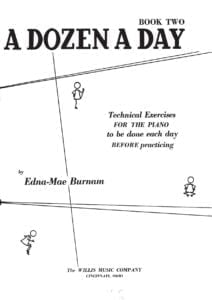 |
|
| A dozen A Day Book 3 Technical exercises for the piano |
 |
|
| A dozen A Day Book 4 Technical exercises for the piano |
 |
|
| A dozen A Day Mini Book Technical exercises for the piano |
 |
|
| A dozen Day Preparatory Book Technical exercises for the piano |
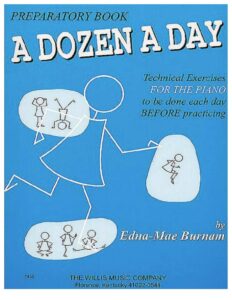 |
|
| A Farewell To Arms Love Theme From A Farewell To Arms film by Mario Nascimbene Francis Webster 1957 |
 |
|
| A Felicidade (Antonio Carlos Jobim) | ||
| A Festival Gathering Of Carols (Musescore File).mscz | ||
| A Fine Frenzy – Almost Lover |
 |
|
| A Fistful of Dollars (Ennio Morricone) | ||
| A Generative Theory Of Tonal Music by Fred Lerdahl and Ray Jackendoff (Book) |
 |
|
| A Guide To Guitar Chords by Curt Sheller |
 |
A Guide To Guitar Chords by Curt Sheller |
| A Guide To Musical Analysis by Nicholas Cook (Book) |
 |
|
| A Handbook Of Piano Playing (By Eric Hope) (1962) |
 |
|
| A Heart Full Of Love (Musescore File).mscz | ||
| A love suicide (Yutaka Minobe) | ||
| A Love Supreme (by Ashley Kahn) The story of john Coltrane’s signature album (Book) |
 |
|
| A Media Luz (Edgardo Donato) | ||
| A Modern Approach To Jazz Rock And Fusion For Guitar with Tablature |
 |
A Modern Approach To Jazz Rock And Fusion For Guitar |
| A Modern Method For Guitar (Berklee) 1 by William Leavitt |
 |
A Modern Method Berklee 1 |
| A Modern Method For Guitar (Berklee) 2 by William Leavitt |
 |
A Modern Method For Guitar (Berklee) 2 |
| A Modern Method For Guitar (Berklee) 3 by William Leavitt |
 |
A Modern Method For Guitar (Berklee) 3 |
| A MOZART REINCARNATED (Ennio Morricone) |
 |
|
| A Mozart Reincarnated by Ennio Morricone (Musescore File).mscz | ||
| A New Approach To Ear Training by Leo Kraft (BOOK) |
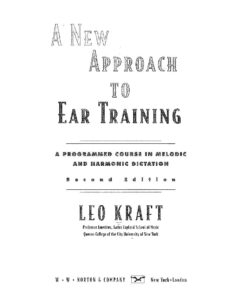 |
|
| A New Approach To Piano Technique (By Ruth A. Dickerson) (1962) |
 |
A new approach to piano technique |
| A Night In Tunisia – Dizzy Gillespie.mscz | ||
| A Pedal Method For The Piano (By Albert F Venino) (1893) |
 |
|
| A Popular Account Of Ancient Musical Instruments And Their Development by William Lynd (Book 1897) |
 |
|
| A Rockin’ Christmas Piano Vocal Guitar |
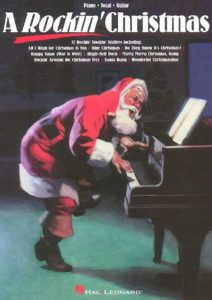 |
20 songs to sing on a rockin’ Christmas Eve Includes: All I Want for Christmas Is You * Grandma Got Run Over by a Reindeer * Happy Xmas (War Is Over) * Jingle-Bell Rock * Merry Merry Christmas Baby * Rockin’ Around the Christmas Tree * Santa Baby & moreRockin Christmas |
| A Single Man – George’s Waltz (Shigeru Umebayashi) | ||
| A Single Man – Stillness of the Mind (Abel Korzeniowski) | ||
| A Smooth Jazz Christmas – Mellow Seasonal Favorites for Piano arr. Roger House |
 |
A Smooth Jazz Christmas – Mellow Seasonal Favorites for Piano arr. Roger House |
| A Song For You – Leon Russell Ray Charles (Musescore File).mscz | ||
| A Star Is Born – Always Remember Us This Way Lady Gaga |
 |
|
| A Star Is Born – Shallow Lady Lady Gaga |
 |
|
| A Tale Of Two Sisters Ost – Epilogue Piano Solo |
 |
|
| A Thousand Years – Twilight OST (Christina Perri) | ||
| A Time For Love – Johnny Mandel |
 |
|
| A Time For Us – Guitar TABlature |
 |
|
| A Time For Us (Love Theme from Romeo and Juliet) Nino Rota |
 |
|
| A Time For Us (Romeo and Juliet OST) Nino Rota | ||
| A Touch Of Jazz 14 well-known hymns, gospel songs and contemporary praise songs by Wolaver Bill |
 |
A Touch Of Jazz 14 well-known hymns, gospel songs and contemporary praise songs by Wolaver Bill |
| A Tribute To Ella Fitzgerald Piano Vocal Guitar |
 |
A tribute to ELLA FITZGERALD |
| A Walk To Remember – Only Hope | ||
| A whiter shade of pale – Procul Harum | A whiter shade of pale – Procul Harum | |
| AaRON U-turn Lili Piano |
 |
|
| Ab Ovo – Joep Beving (Musescore File).mscz | ||
| Abba – Abba Gold – Greatest Hits |
 |
ABBA Gold Geatest Hits booksong sheet music |
| Abba – Chiquitita | ||
| Abba – Dancing Queen | ||
| Abba – Fernando | ||
| Abba – I Have A Dream | ||
| Abba – Like An Angel Passing Through My Room | ||
| Abba – Mamma Mia | ||
| Abba – Slipping Through My Fingers | ||
| Abba – Thank You For The Music | Abba-Thank-You-For-The-Music 1st page | |
| ABBA – Thank You For The Music (Piano Vocal Guitar) | ABBA – Thank You For The Music (Piano Vocal Guitar) | |
| ABBA – Thank You For the Music (Piano vocal Guitar) (Musescore File).mscz | ||
| Abba – Thank You For The Music Piano & vocal | Abba – Thank You For The Music-abba-satb | |
| Abba – The Winner Takes It All | ||
| ABBA Dancing Queen Easy Piano Solo |
 |
|
| ABBA Fernando (Piano Solo arr.) |
 |
|
| ABBA Fernando (Piano Solo arr.).mscz | ||
| ABBA Greatest Hits |
 |
ABBA GREATEST HITS SHEET MUSIC BOOK |
| ABBA I Have A Dream |
 |
|
| Abba The Very Best Vol 1 Easy Piano Hans Gunter Heumann Pop Classics For Piano |
 |
Abba The Very Best Vol 1 Easy Piano |
| Abba The Very Best Vol 2 Easy Piano Hans Gunter Heumann Pop Classics For Piano |
 |
Abba The Very Best Vol 2 Easy Piano |
| Abbey Lincoln Songbook |
 |
Abbey Lincoln Songbook |
| Abbey Lincoln Songbook Piano Vocal Guitar Chords |
 |
Abbey Lincoln Songbook Piano Vocal Guitar Chords |
| Abdullah Ibrahim – The Piano World Of |
 |
Abdullah Ibrahim, The Piano World Of |
| Abdullah Ibrahim The African Piano Of Abdullah Ibrahim Vol 1 |
 |
Abdullah Ibrahim The African Piano Of Abdullah Ibrahim Vol 1 |
| Abdullah Ibrahim The Wedding (piano solo transcription sheet music, partition) |
 |
|
| Abel Korzeniowski – Death Is My Heir (from Romeo and Juliet) |
 |
|
| ABRSM Jazz Piano Pieces Grade 1 to 5 |
 |
ABRSM Jazz Piano Pieces Grade 1 to 5 ABRSM Jazz Piano Pieces Grade 5ABRSM Jazz Piano Pieces Grade 5 |
| ABRSM Piano Exam Pieces Grade 1 (2016) |
 |
ABRSM Piano Exam Pieces Grade 1 (2016) |
| ABRSM Piano Scales, Arpeggios Grade 8 |
 |
|
| ABRSM Piano Scales, Arpeggios and broken chords Grade 1 |
 |
|
| ABRSM Piano Scales, Arpeggios and broken chords Grade 4 |
 |
ABRSM Piano Scales, Arpeggios and broken chords Grade 4 |
| ABRSM Piano Scales, Grade 2 A Guide for Students and Teachers | ABRSM Piano Scales, Grade 2 A Guide for Students and Teachers | |
| ABRSM – Time pieces for guitar vol. 1 |
 |
|
| ABRSM – Time pieces for guitar vol. 2 |
 |
|
| ABRSM 2017 18 Piano Exam Pieces Grade 1 |
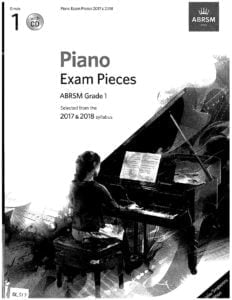 |
ABRSM 2017 18 Piano Exam Pieces Grade 1 |
| ABRSM 2017 18 Piano Exam Pieces Grade 2 |
 |
ABRSM 2017 18 Piano Exam Pieces Grade 2 |
| ABRSM 2017 18 Piano Exam Pieces Grade 3 |
 |
|
| ABRSM 2017 18 Piano Exam Pieces Grade 4 |
 |
|
| ABRSM 2017 18 Piano Exam Pieces Grade 5 |
 |
|
| ABRSM 2017 18 Piano Exam Pieces Grade 6 |
 |
|
| ABRSM 2017 18 Piano Exam Pieces Grade 7 |
 |
|
| ABRSM 2017 18 Piano Exam Pieces Grade 8 |
 |
|
| ABRSM 2021-2022 Piano Exam Pieces Grade 1 |
 |
|
| ABRSM 2021-2022 Piano Exam Pieces Grade 2 |
 |
|
| ABRSM 2021-2022 Piano Exam Pieces Grade 3 |
 |
|
| ABRSM 2021-2022 Piano Exam Pieces Grade 5 |
 |
|
| ABRSM 2021-2022 Piano Exam Pieces Grade 6 |
 |
|
| ABRSM 2021-2022 Piano Exam Pieces Grade 8 |
 |
|
| ABRSM 2021-2022 Piano Exam Pieces Initial Grade |
 |
ABRSM 2021-2022 Piano Exam Pieces Initial Grade |
| ABRSM Aural Training In Practice Book 1 Grades 1 to 3 |
 |
|
| ABRSM Aural Training In Practice Book 2 Grades 4 and 5 |
 |
|
| ABRSM Discovering Music Theory (Complete) Grades 1 to 5 Workbook by Simon Rushby (2020 Exams) |
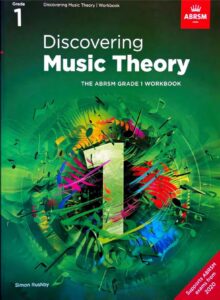 |
ABRSM Discovering Music Theory (Complete) Grades 1 to 5 Workbook by Simon Rushby (2020 Exams) contents |
| ABRSM Erster Verlust Grade 4 ABRSM Piano Exam Pieces 2021 & 2022 |
 |
|
| ABRSM Etude In A Minor – Dmitry Kabalevsky ABRSM Grade 4 Piano Exam Pieces 2021 & 2022 |
 |
|
| ABRSM Grade 2 – Inter-City Stomp byChristopher Norton From Microjazz Collection (Sheet Music) |
 |
|
| ABRSM Initial Grade Piano Exam Pieces 2023 2024 |
 |
|
| ABRSM Minuet and Trio D 41 No 21 – Franz Schubert ABRSM Grade 4 Piano Exam Pieces 2021 & 2022 |
 |
|
| ABRSM More Music Theory Sample Papers Grade 5 For New Format |
 |
|
| ABRSM Music Theory In Practice, Grade 1 (Eric Taylor) |
 |
|
| ABRSM Music Theory In Practice, Grade 2 (Eric Taylor) |
 |
|
| ABRSM Music Theory Past Papers Grade 1 2004 |
 |
|
| ABRSM Music Theory Past Papers Grade 4 2016 |
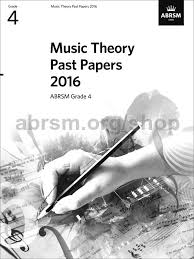 |
|
| ABRSM Music Theory Past Papers Grade 5 2012 |
 |
|
| ABRSM Music Theory Past Papers Grade 6 2013 |
 |
|
| ABRSM Nikki Iles Danny Boy ABRSM Piano Exam Grade 8 2023 Jazz Piano arr. inspired by Bill Evans |
 |
|
| ABRSM Nikki Iles Friends Book 1 Intermediate Jazz Pieces For Piano |
 |
ABRSM Nikki Iles Friends Book 1 Intermediate Jazz Pieces For Piano |
| ABRSM Nikki Iles Friends Book 2 Intermediate To Advanced Jazz Pieces For Piano |
 |
ABRSM Nikki Iles Friends Book 2 Intermediate To Advanced Jazz Pieces For Piano |
| ABRSM Nikki Iles The Elephant Parade ABRSM piano Exam |
 |
|
| ABRSM Piano 2025-2026 Grade 8 C3 A Nightingale Sang in Berkeley Square by Sherwin – Maschwitz |
 |
|
| ABRSM Piano Exam 2007-2008 Grade 3 |
 |
|
| ABRSM Piano Exam 2015-16 Grade 3 |
 |
ABRSM Piano Exam 2015-16 Grade 3 |
